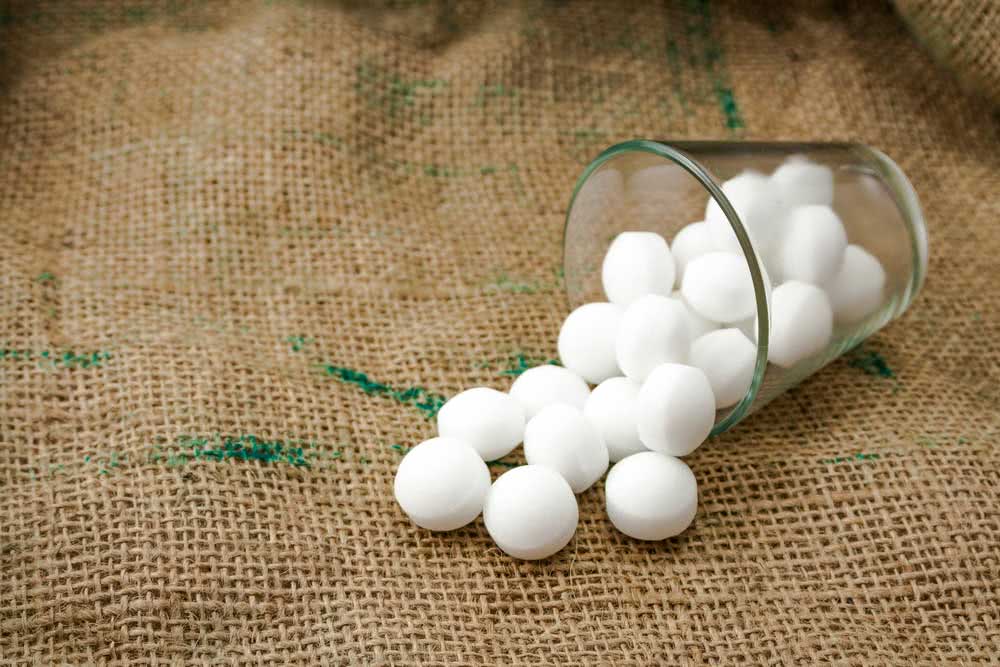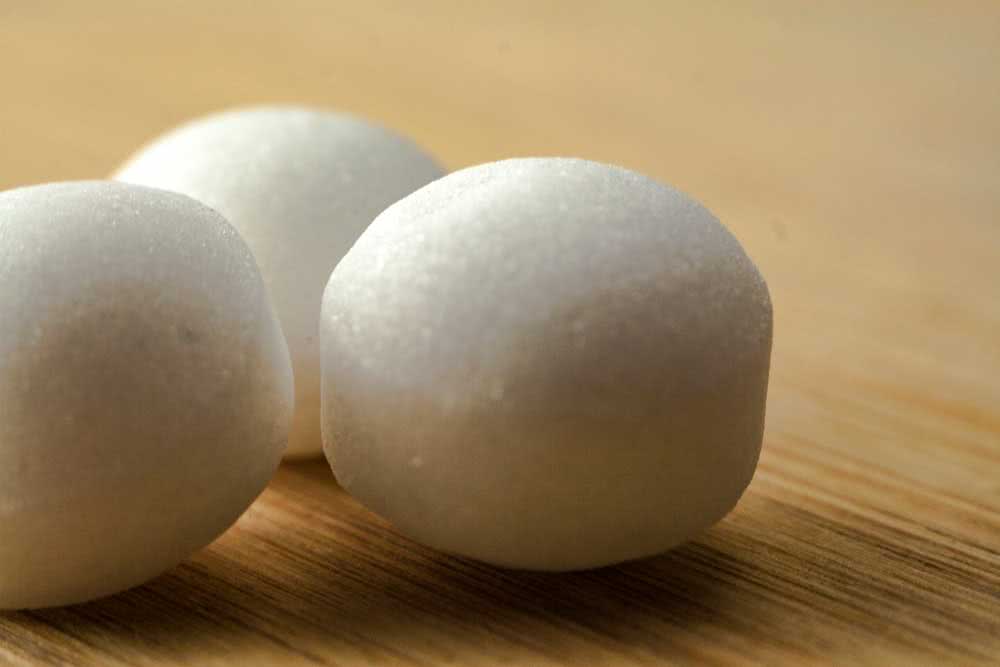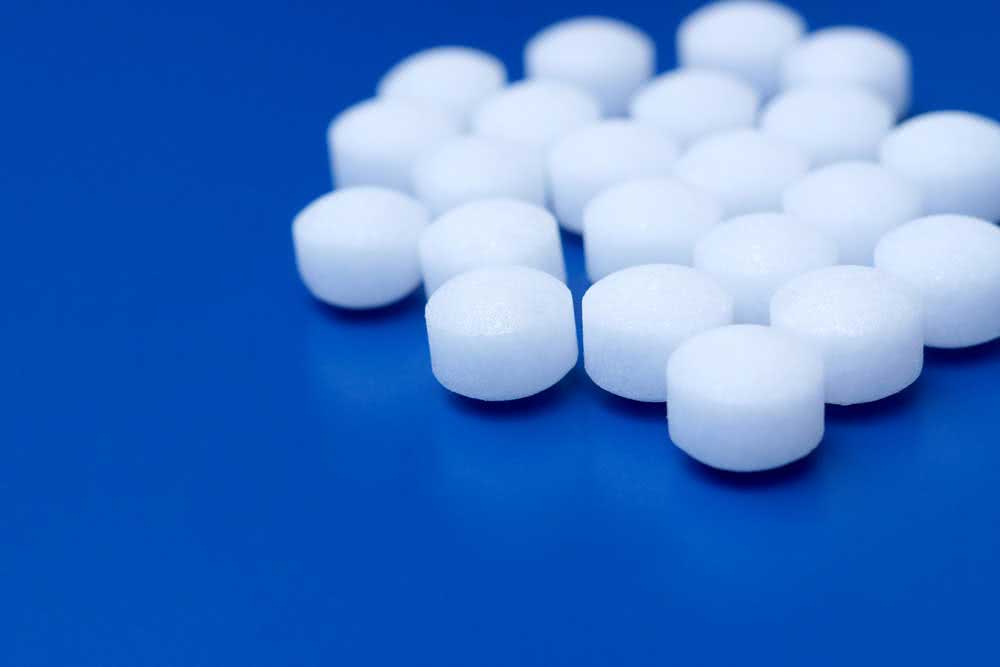Nobody likes to open the cabinet drawer and be surprised by the presence of moths or a disgusting cockroach. It is chilling!
And it is for these and others that the use of naphthalene became popular. But in spite of being so common, many people don’t even know what naphthalene is for and if it is as good as they say out there.
Want to discover the raw truth about mothballs? Then come follow this post with us.
What is mothballs?

Do you know what are these white balls with a somewhat dubious smell?
Naphthalene is a chemical substance that has a very interesting physical property: they can get straight from the solid to the gaseous state, becoming a type of gas with a strong enough smell to scare cockroaches, moths, ants and even rats .
All this at a very affordable price, since a package of mothballs is sold for a trifle of R $ 1.90.
So far the idea of using mothballs looks very promising, doesn’t it? But let’s go ahead.
Mothball is bad?
What looked very good until the last lines changes completely from now on. That’s because naphthalene is good for your health.
But what is the real danger of these white balls?
The gas released by mothballs is harmful to human health when inhaled, causing various symptoms and reactions.
Not to mention that naphthalene is a danger for children, since its rounded shape is very similar to candies and chewing gums, and may lead the children to accidentally ingest the substance.
What are the risks of naphthalene?

If naphthalene is inhaled frequently and in greater than adequate amounts, some symptoms may appear.
It is common for a person intoxicated by mothballs to experience headaches, feeling sick, dizziness and mental confusion, irritation of the skin and eyes, in addition to affecting the respiratory system.
When inhaled in large quantities, naphthalene can still attack red blood cells leading to a deficiency in the blood and causing severe anemia.
When ingested, naphthalene can cause vomiting, diarrhea, internal damage to the kidneys and livers, as well as seizures.
Pregnant and lactating women should avoid contact with mothballs at all costs, since the substance can intoxicate the baby, either by penetrating the placenta or by milk.
The use of naphthalene has been so controversial that even the WHO (World Health Organization) has already warned about the risks of the substance and recommends that people do not use it at home.
Some studies by the organization even suggest that prolonged and continuous contact with naphthalene can cause cancer.
In other words, there is little care.
How to use mothballs safely?

It is possible to use mothballs safely inside the house by taking some simple precautions. Check out:
- Use only one mothball ball at a time and do not leave the product packaging open. This prevents the gas from dispersing in the environment.
- Wrap the mothball ball with a plastic bag and keep it in the most isolated and distant place possible, avoiding any kind of contact with people and animals.
- Never use more than one moth ball per room. If the rooms are small, a single mothball stone is enough to keep insects away.
- Avoid using mothballs in drawers and cabinets, especially for children. The smell of the substance permeates clothing and can be difficult to remove. Prefer to put the balls on top or behind the cupboard, but always very well hidden from children.
- The same goes for kitchen cabinets. The gas released by naphthalene can accumulate in dishes and food, so keep the substance away from these places.
- Do not buy very large packages of mothballs, such as those of 1 kg. Prefer small packages, as they are easier and safer to store.
- Always wear gloves when handling mothballs.
However, even with all the precautions, the risks still exist.
Therefore, it is best to seek alternative solutions that are less harmful to health, as you will see in the next topic.
How to replace naphthalene
The risk of using mothballs is, without a doubt, much greater than the benefits it presents. And if you take into account the amount of products and alternatives that exist today to scare away insects you will see that the need to use mothballs is practically zero.
There are natural substitutes for naphthalene, as well as chemical substitutes. Check out some options.
Cleaning and organization
This tip is so simple, but that’s not why it should be overlooked. Cleanliness is a crucial factor for those who want to keep insects away from home.
That’s because flies, cockroaches, ants, moths and other insects are looking for one thing: food (and water too).
That is, if you eliminate the supply of food and water for these insects it will automatically force them to look for other places to live.
Avoid the accumulation of dirty dishes in the sink, close the food packaging very well, use lids on the dumps and do not leave uncapped pots on the stove.
Clean the surfaces of cabinets, sinks, countertops and even the floor with a mixture of water, vinegar and alcohol. The smell of this solution also helps to keep insects away.
Take the opportunity to keep your home always ventilated and with plenty of light, as these insects love to hide in humid, hot and dark places.
The more airy, bright and dry your home is, the better.
Aerosol repellents
Aerosol repellents are a chemical alternative to the use of naphthalene. Although they also have a degree of toxicity to humans, aerosols are still safer and less toxic than naphthalene.
Plug repellents
Plug-in repellents have the same characteristics as aerosol, mainly scaring away mosquitoes and flies. They also have toxicity levels, but are less than that of mothballs.
Electronic Repellents
There are some types of electronic repellents on the market that promise to scare away from cockroaches, flies and spiders to mice.
According to the manufacturers, these repellents act from a range of sound inaudible to humans, but unbearable for insects, causing them to leave the place.
The advantage of this type of repellent is that it is non-toxic, does not pollute and can be used quietly in homes with babies, but with restriction in homes that have animals, since hearing dogs and cats can capture the sound waves emitted by these devices.
However, there is no scientific evidence to prove the effectiveness of this type of repellent.
Remove mold
Do you know that product known as mold strip? You can use it instead of mothballs. The idea here is not to scare away the insects by the smell, but to avoid the accumulation of mold and mildew in the environments, so that these animals are not attracted by humidity.
Deodorant backpacks
Now if you are looking for a natural solution to the use of repellents, insecticides and mothballs, a good option is the deodorant bags.
You just need a thin piece of fabric, like TNT or fleece. Make a bundle with your hands and inside it put cloves, cinnamon sticks and a few drops of lavada essential oil and tea tree oil. Tie it up and then store it in the drawer or cabinet.
So your home is protected and safe!



